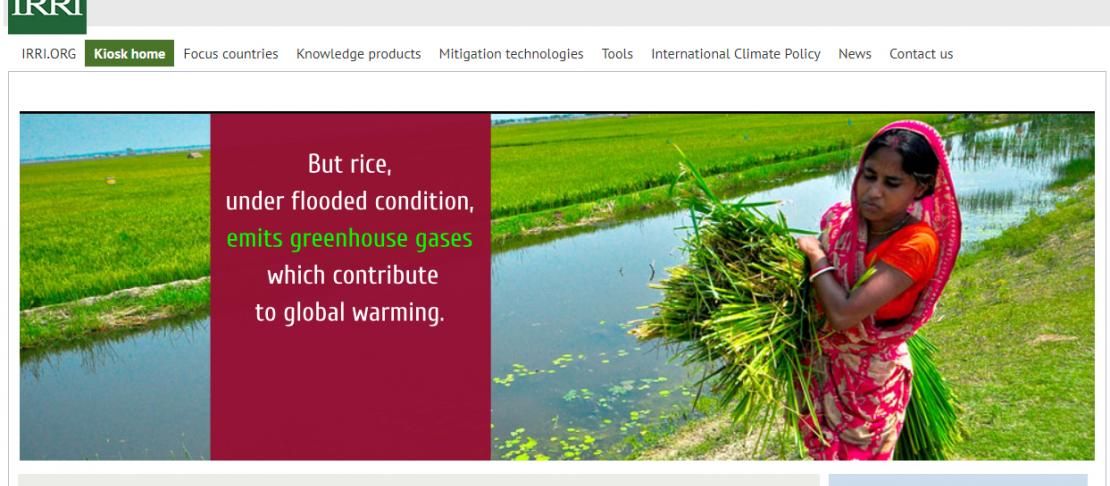GHG mitigation in rice information kiosk

Paddy rice is the staple crop for most of the world’s population. In 2012 rice was grown on more than 164 million ha worldwide, and in more than 100 countries. Asia, with a total of some 650 million metric tons (MT), accounts for about 90% of rice production, followed by Latin America (25 million MT) and sub-Saharan Africa (21 million MT).
Globally, irrigated lowland rice occurs on about 80 million ha and provides 75% of the world’s rice production. Irrigated rice is the most important rice production system for food security, particularly in Asia. Women’s labor plays a significant role in rice production—anywhere from 50% in Indonesia, Thailand, and the Philippines to as much as 80% in India and Bangladesh.
In 2012, 75% of the area on which rice was grown worldwide was flooded rice systems. These flooded rice systems produce about 10% of anthropogenic emissions in the agriculture sector globally, in the form of methane. But a number of practices involving management of water and organic inputs can decrease emissions, most notably alternate wetting and drying (AWD). The International Rice Research Institute (IRRI) is investigating how and where leading rice-producing countries can implement and scale up AWD to mitigate emissions and support farmers’ livelihoods.
The GHG mitigation in rice information kiosk serves as an information kiosk for greenhouse gas emissions and mitigation options in rice production systems. It covers rice management practices, data on biophysical and socioeconomic suitability of farming technologies and practices, and policy actions in Bangladesh, Colombia, and Vietnam.
Click here to access the GHG mitigation in rice information kiosk.
This mitigation platform is an initiative by the International Rice Research Institute (IRRI) in Bangladesh and Vietnam, supported by Climate and Clean Air Coalition (CCAC) and the CGIAR Research Program on Climate Change, Agriculture and Food Security (CCAFS).